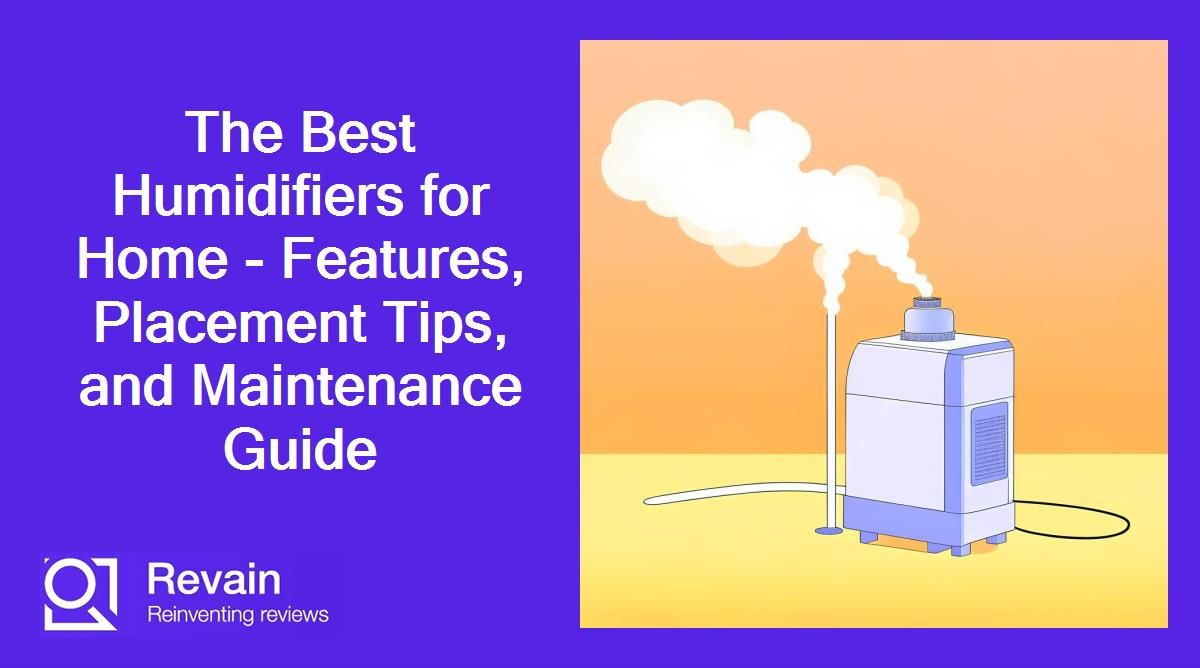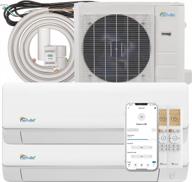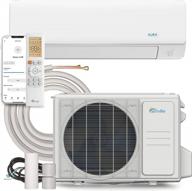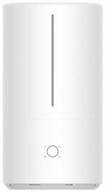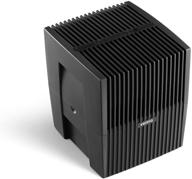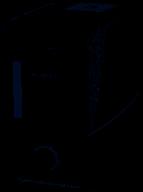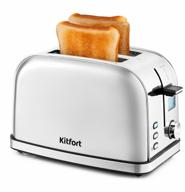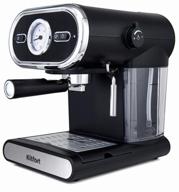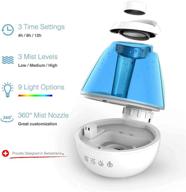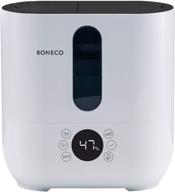The Hidden Dangers of Dry Air and How Humidifiers Can Help
During the winter months, many homeowners crank up the heat without realizing the negative effects extremely dry air can have. With the cold air outdoors and the hot, dry air indoors, humidity levels often drop below the recommended 30-50% range. This seemingly small change can wreak havoc on your health, home, and comfort.
Another interesting products
Health Problems
Dry air irritates and inflames the nasal passages and throat. This leads to an increase in:
- Colds and flu
- Coughs
- Sinus congestion
- Dry skin
- Itchy eyes
- Chapped lips
- Nose bleeds
Young children and the elderly are especially susceptible to these issues. Dry air may also worsen allergies, asthma, and eczema flare-ups.
Home Damages
Indoor humidity levels below 30% can cause:
- Wood floors, furniture, and musical instruments to crack and warp
- Paint to peel
- An increase in static electricity zapping you when you touch metal or plastic surfaces
- Excessive shrinkage in plaster walls
These damages are permanent and costly to repair.
Top products in 🌫️ Humidifiers
Discomfort
Dry air can make you feel colder than the actual temperature due to increased evaporation from your skin. Low humidity also exacerbates problems with:
- Dry, itchy skin
- Chapped lips
- Scratchy eyes and throat
- Increased severity of electric shocks from static electricity
How Humidifiers Can Restore Healthy Humidity Levels
Humidifiers introduce water vapor back into dry air to boost humidity levels. There are two main types:
Cool Mist Humidifiers
- Use a wick filter, cold water and a fan to emit a cool, invisible mist
- Best for areas prone to mold growth since no warm moisture is released
Warm Mist Humidifiers
- Heat water into steam to disperse in the air
- Provide soothing, visible warm moisture
With the right humidifier for your situation, you can restore proper humidity levels. This will prevent health problems, home damages, and discomfort that dry air causes during winter.
Similar products
How to Choose the Right Type of Humidifier
With different types of humidifiers available, it can be tricky to determine which is best for your situation. Consider these key factors when deciding which type of humidifier to purchase:
Room Size
Calculate the square footage of the room(s) you want to humidify. This determines the humidifier's required moisture output, measured in gallons/day. A larger room needs a more powerful humidifier.
| Room Size | Moisture Output Needed |
|---|---|
| Small room (up to 250 sq ft) | 0.5 - 1 gallon/day |
| Medium room (250 - 1000 sq ft) | 1 - 3 gallons/day |
| Large room (1000+ sq ft) | 3+ gallons/day |
Tap vs. Filtered Water Models
Tap water models are the most affordable option, but minerals in tap water will leave white dust around your home. Filtered water models use filters to remove these minerals, but have higher maintenance costs.
Warm vs. Cool Mist
Cool mist humidifiers are best for bedrooms and areas prone to mold growth. Warm mist models provide soothing, visible steam and may help ease cold symptoms.
Evaporative vs. Ultrasonic
Evaporative models use wick filters, which require regular cleaning. Ultrasonic models vibrate water to produce mist and have lower maintenance.
Top Fill vs. Bottom Fill
Top fill models are easiest to refill. Bottom fill models sit directly in a water tank and have a larger capacity, making less frequent refills necessary.
Run Time Per Refill
If you don't want frequent refills, choose a model that can run for 24 hours or more on a single tank. Humidifiers with a remote control or humidistat can automatically shut off between refills.
Noise Level
Ultrasonic and impeller humidifiers are quieter than evaporative models. Look for a model with a low decibel rating if you'll use it in a bedroom.
Weighing all these factors will ensure you select the right type of humidifier tailored to your space and needs.
Cool Mist vs. Warm Mist Humidifiers: Key Differences
When it comes to adding moisture back into dry air, cool mist and warm mist humidifiers get the job done. But they have some key differences in how they operate and perform.
How They Work
Cool mist humidifiers use a wick filter and fan to blow room temperature water into a cool, invisible mist. Models like evaporative and ultrasonic humidifiers fall into this category.
Warm mist humidifiers boil water to produce steam vapor. This hot moisture is released into the air as a visible mist.
Efficiency
Evaporative cool mist models are 30-50% efficient as some water stays on the wick. Newer ultrasonic models are up to 80% efficient at producing water vapor.
Warm mist humidifiers are up to 99% efficient as nearly all the water is converted to steam.
Convenience
- Cool mist models require frequent wick filter changes every 1-2 months.
- Warm mist models have no filter to replace, but may require descaling agents to remove mineral buildup from boiling water.
Safety
The boiling water in warm mist models makes them unsafe for use around children. The steam and hot surfaces can cause burns.
Cool mist options are safer around kids and pets since no boiling water is present.
Ideal Use Cases
Cool mist humidifiers are better suited for:
- Bedrooms - cool, invisible moisture won't disturb sleep
- Preventing condensation and mold in colder climates
- Nurseries or kids' rooms - safer around children
Warm mist models excel at:
- Alleviating cold and flu symptoms - warm steam feels soothing
- Humidifying larger rooms faster with highly efficient steam
- Preventing dry skin and sinuses by releasing visible, absorbed moisture
Operating Costs
Evaporative cool mist models use the most electricity to run the fan. Ultrasonic models are more energy efficient.
Warm mist options use similar electricity as a kettle to boil the water. Energy use varies based on boiler size.
In summary, choose a cool mist humidifier for safety and invisible moisture distribution or a warm mist model for efficiency, comfort and larger room coverage.
Key Humidifier Features: Size, Coverage, and Runtime
When picking a humidifier, three key factors to consider are the unit's physical size, the square footage it can handle, and how long it can run between refills. Evaluate these specifications to ensure the model suits your space.
Size Dimensions
Check the humidifier's dimensions to ensure it will fit in the desired room. Measure available tabletop or floor space to compare:
- Tabletop models - Small and portable, good for single rooms. Range from 9-15 inches tall.
- Console humidifiers - Larger tanks require a spot on the floor. Can be 2 feet wide and 2-4 feet tall.
- Whole house humidifiers - Installation required on central heating/air ducts.
Room Coverage Area
Humidifier specs will indicate the recommended square footage for a model's moisture output level:
- Personal humidifiers - Up to 500 sq ft rooms
- Medium humidifiers - 500-1000 sq ft rooms
- Large humidifiers - 1000+ sq ft rooms
Oversized units for small spaces waste energy. Undersized units can't properly humidify large rooms.
Runtime Per Tank
Look for runtime duration to estimate refill frequency:
- 8-12 hours - Refills 1-2 times daily
- 24-48 hours - Refills every 1-2 days
- 72+ hours - Refills every 3-4 days
Auto shut-off when empty can prevent burnout. Humidity sensors also help regulate moisture.
Considering these key humidifier traits - size, coverage, and runtime - allows you to choose a model well-suited for your needs.
Useful Features to Look for in Humidifiers
Today's humidifiers offer handy features that allow for precise humidity control, added convenience, and automation. When purchasing a humidifier, consider models with:
Humidistats
A humidistat is a built-in sensor that monitors relative humidity levels. You set your desired humidity percentage and the humidifier automatically turns on when levels drop too low and off when the target is reached. This regulates moisture output.
Benefits of Humidistats
- Maintains optimal humidity range of 30-50%
- Prevents over-humidifying which can cause condensation
- Saves energy by only running when needed
Timers
Timers allow you to program when the humidifier turns on and shuts off. For example, you could set it to run only at night while sleeping.
Benefits of Timers
- Automates operation for convenience
- Can switch off once desired humidity is reached
- Can help save energy costs by limiting runtime
Remote Controls
Remotes allow you to control humidifier settings from across the room. This allows easy adjustment without getting up.
Benefits of Remote Controls
- Change modes or settings from a distance
- Useful if the unit is placed far away or difficult to reach
- No need to manually turn off; can power down from bed, couch, etc.
Consider humidifiers with these types of convenient features to create the optimal humidity environment. Automation and remote access provides precision control over your comfort and health.
Top Fill vs. Bottom Fill Humidifiers: Key Differences
Humidifiers come in two main designs when it comes to filling the water tank - top fill and bottom fill models. Understanding the pros and cons of each will help decide which is best for your needs.
Top Fill Humidifiers
As the name suggests, top fill humidifiers have a large opening at the top to pour water directly into the tank. The tank is removable for easy transport to the sink for refills.
Pros
- Refilling is simple and convenient
- Tanks are easy to detach and carry when full
- Openings are large enough for ice cubes or essential oils
Cons
- Tanks tend to have smaller capacity
- More frequent refills needed for continuous use
Bottom Fill Humidifiers
Bottom fill models sit directly inside a permanent water basin or tank. You fill the base through a small port, and the water is absorbed into the humidifier.
Pros
- Large capacity tanks require less frequent refilling
- Don't have to move the full humidifier unit when refilling
Cons
- Refilling through a small port is sloppier and harder
- Cannot easily add ice cubes or supplements into the tank
In summary, top fill models offer convenient, removable tanks for quick refills, while bottom fill designs have larger capacities but trickier refilling. Consider your usage and needs when deciding between the two.
Optimizing Humidifier Placement and Upkeep
Proper placement and regular maintenance are key to ensuring your humidifier performs efficiently. Keep these factors in mind when operating a humidifier in your home.
Placement Considerations
Where you locate the humidifier impacts performance:
- Place on an elevated, level surface for mist to distribute properly
- Avoid tight corners or directly next to a wall or vent
- Keep humidifier away from electronics and wooden furniture
- Allow 2-3 feet distance from moist, porous surfaces prone to mold
For maximum efficiency, place the humidifier near the room's center on an interior wall.
Cleaning and Sanitizing
Regular cleaning prevents bacteria and mold growth in standing water:
- Follow manufacturer guidelines for cleaning frequency, often weekly
- Disinfect and descale tanks with distilled white vinegar
- Rinse debris and deposits from wick filters
- Replace filters every 1-2 months as recommended
Monitoring Mineral Buildup
Tap water leaves white dust from minerals that can clog humidifiers. Watch for buildup and reduce it by:
- Using distilled or demineralized water
- Adding descaling solvents to the tank
- Replacing wick filters more often
- Choosing models with demineralization cartridges
Handling Condensation
Excess moisture on windows and surfaces indicates too high humidity. Adjust settings or relocate the unit if you notice condensation.
End of Season Maintenance
To store the humidifier until next season:
- Clean and fully dry the tank, reservoir, and filters
- Remove batteries from remote controls
- Store in cool, dry location
With proper placement and routine care, your humidifier will run efficiently for many seasons.
How Amazon Prime Boosts Your Humidifier Shopping
A Prime membership can make purchasing humidifiers and other home health products on Amazon much more convenient and affordable. Here are some of the top benefits Prime provides humidifier shoppers:
Free Two-Day Shipping
Prime members enjoy free two-day shipping on eligible items. This means you can order a humidifier and receive it rapidly without paying shipping fees. No more waiting over a week for standard shipping times.
Free One-Day and Same-Day Delivery
For those times when you need a humidifier urgently, Prime offers free one-day shipping and same-day delivery on qualifying purchases and locations. This is extremely helpful if your humidifier breaks right at the start of cold season and you need a quick replacement.
Free Release-Date Delivery
When awaiting the release of a new humidifier model you want to try, Prime members can get free release-date delivery. Your newest humidifier gets delivered on launch day so you're not waiting.
Try Before You Buy
The Prime Wardrobe feature lets you try products like humidifiers before committing to purchase. You can test out different models for up to 7 days to compare before deciding what to keep.
Access to Lightning Deals
Prime members get 30 minute early access to limited time Lightning Deals. This allows you to snap up humidifiers and accessories at heavily discounted prices before inventory sells out.
Streaming Entertainment Benefits
Your membership also includes access to Prime Video, Prime Music, and more. You can stream movies or tunes to entertain yourself while opening and setting up your latest humidifier delivery!
A Prime membership provides numerous benefits for humidifier shoppers beyond just the free shipping perk. From quick delivery to exclusive deals, Prime amplifies the convenience and savings of humidifier purchases.
What Is The Ideal Humidity Level For Protecting Furniture And Floors?
Maintaining the right humidity level is crucial to protect wooden furniture and floors from damage. Here are the recommended humidity levels for protecting furniture and floors:
It is important to monitor the humidity levels in your home and adjust accordingly to protect your wooden furniture and floors.
Best Humidity Level For Skin
The ideal humidity level for healthy skin is around 40-50% . Maintaining this humidity level can help keep your skin hydrated, soft, and bouncy. However, humidity levels that are too high or too low can cause skin problems. Low humidity can cause dryness, itching, flaking, and eczema, while high humidity can make your skin more susceptible to oiliness, acne, allergies, and fungal infections like athlete’s foot, jock itch, or ringworm. Therefore, it is important to monitor the humidity levels in your home and adjust accordingly to protect your skin. You can use a hygrometer to measure the humidity of a space. If you live in an area with low humidity, investing in a humidifier can help maintain the ideal humidity level for your skin. On the other hand, if you live in a humid environment, you can take a shower as soon as possible after working out or sweating to avoid fungal infections. Using a foaming cleanser to remove excess oil and dirt can also help keep your skin healthy and happy in humid environments.
How Does Humidity Affect Skin Health??
Humidity can have both positive and negative effects on skin health. Here are some ways humidity can affect your skin:
Positive effects:
Negative effects:
It is important to maintain a balanced humidity level between 30-50% to keep your skin healthy and hydrated. If you live in an area with low humidity, investing in a humidifier can help maintain the ideal humidity level for your skin. On the other hand, if you live in a humid environment, you can take a shower as soon as possible after working out or sweating to avoid fungal infections. Using a foaming cleanser to remove excess oil and dirt can also help keep your skin healthy and happy in humid environments.






